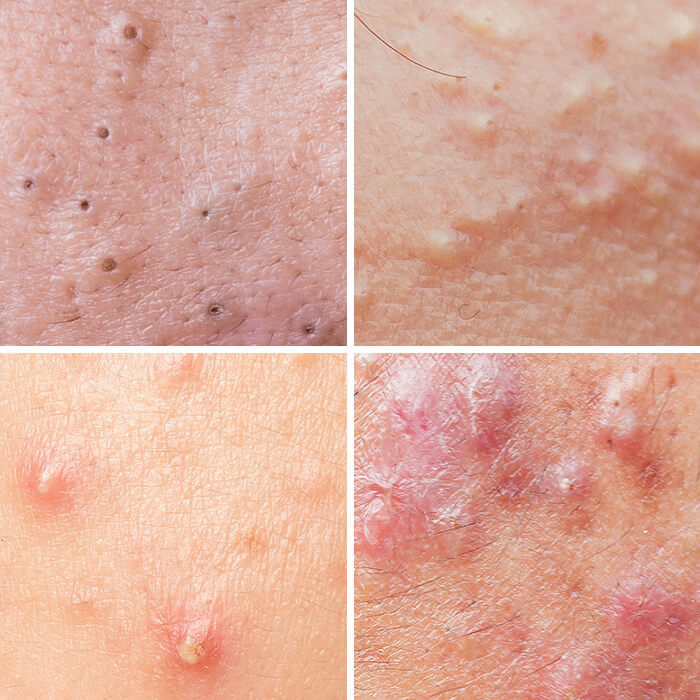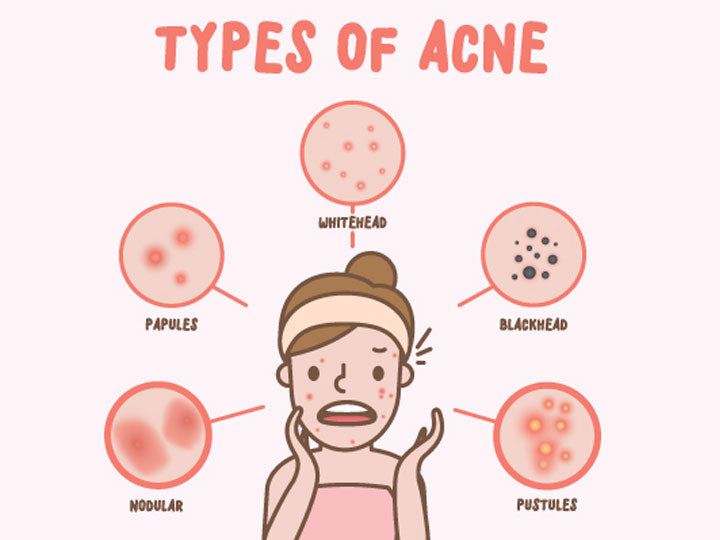
There are dozens of different types of acne, each with its own treatment regimen and symptoms. In order to get the best treatment for your acne, you must first distinguish your specific type of acne. Then you can create a customized treatment plan that will eliminate your breakouts and leave you feeling more confident about your appearance. Listed below are some of the most common types of skin conditions, as well as treatments for each. Having a clear understanding of your acne type will allow you to pick the right treatment option.
Inflammatory acne is the most common type of acne and involves the growth of bacteria in the follicles. This type of acne is the most common, causing most of the breakouts. Inflammatory acne results in nodules, pustules, and cysts. These types of acne are the most difficult to treat. Luckily, there are a number of effective medications available to help you manage your condition. However, you should not attempt to self-extract comedones, as this could create more harm than good.
Inflammatory acne occurs when the oil glands in the skin become inflamed, resulting in the appearance of whiteheads and blackheads. The skin cells surrounding follicles may also be inflamed. This condition can also result in papules, cysts, and nodules. If you have more severe acne, you should consult a dermatologist to get the proper treatment. If you’re suffering from a serious form of the disease, you should contact a doctor immediately.
You must also consider the severity of acne. A few weeks ago my husband developed a recurring skin condition called inflammatory acne. I had a similar issue. I was worried about what to do next, but he took care of it. I was relieved to see the clearest skin in a couple of months. I have never had such severe breakouts and the pain I experienced was a sign of deeper acne.
Inflammatory pimples are red and swollen. The skin around the follicles is inflamed. Propionibacterium acnes is the bacteria that causes acne. These bacteria live in the follicles and cause inflammation. Although these bacteria are the main cause of inflammatory and non-inflammatory forms of acne, they are not the only ones. Other factors may contribute to the development of these types of acne.

Breakouts love company. A person with a combination of different types of acne is more likely to have a mixture of patches. While blackheads and whiteheads tend to occur together, cysts and nodules often occur together. If your acne is causing you pain, it could be a sign of inflammatory acne. For the best acne treatment, you should check out the information on the website vamonosdebodorrio.com
about treatments that treat the root cause of your acne.
Inflammatory acne can be quite painful. It may be accompanied by dark spots. These spots are caused by irregular reflection of light off the clogged follicle. If your breakouts occur in a group, they might be a combination of different blemish types. Sometimes a breakout will be whiteheads and blackheads. You should consult a doctor to determine which type of acne you have. There are several types of acne, and your condition may affect your overall health.
Inflammatory acne is a common skin condition, with both blackheads and whiteheads appearing together. This type of acne often involves both blackheads and whiteheads, and is the most common type of acne. Although it may seem like a minor problem, it is still a significant problem and requires treatment. Fortunately, there are many effective ways to prevent and cure breakouts. For those who have severe acne, it is best to consult a doctor if you have a family history of it.
There are two broad types of acne. Inflammatory acne is red and swollen, and can be painful. There are four main types of acne. They are all different, but they have some common identifying characteristics. One of the defining characteristics of inflammation acne is a plugged pore that does not have pus. A pustule is also classified as a zit. Whether your acne is inflammatory or non-inflammatory, it will have different types of skin cells.